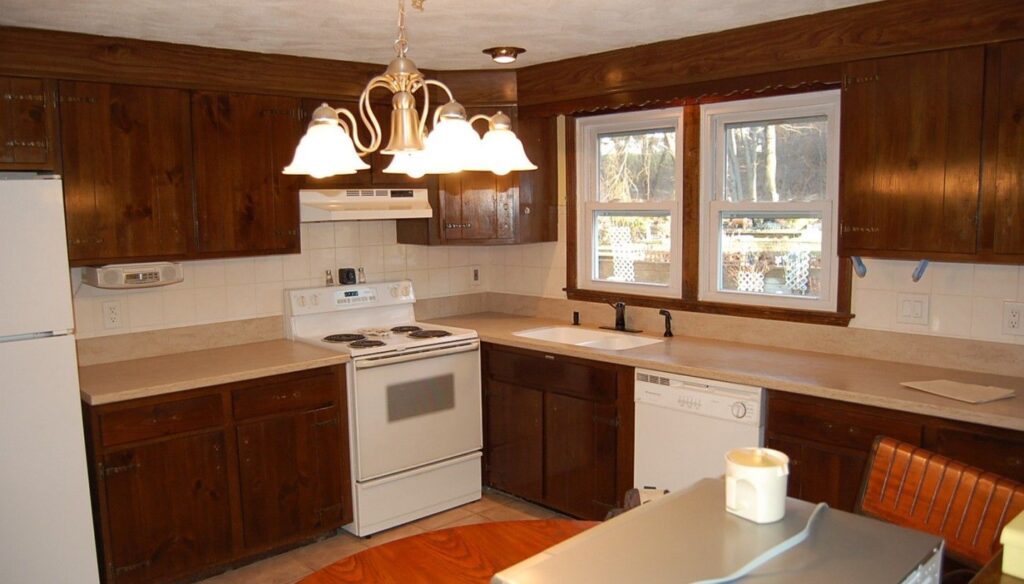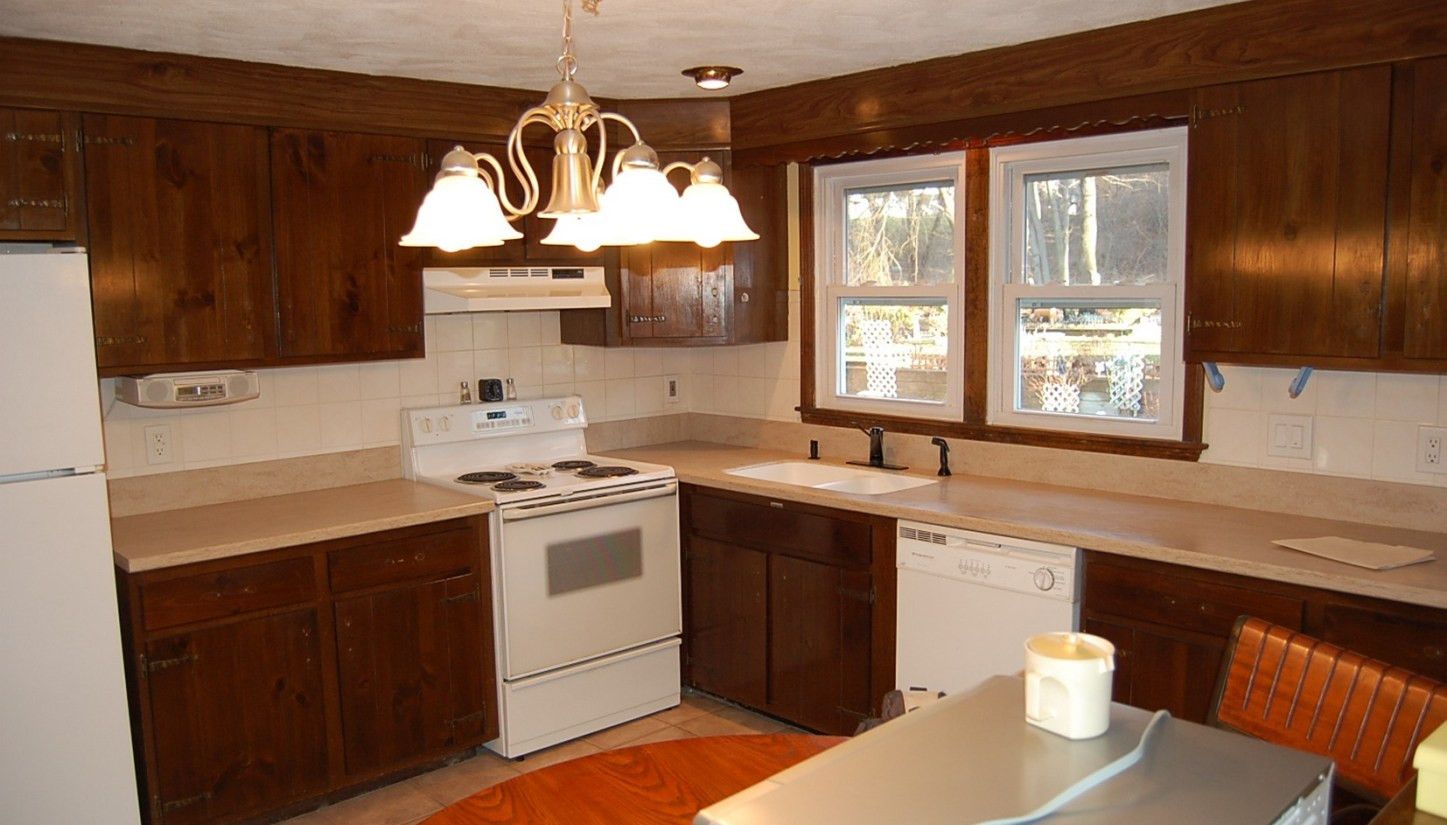
Kitchen Transformation Showdown: Refacing vs. Painting – Which Saves You More?
Tired of your outdated kitchen but dreading a full-scale renovation? You’re not alone. Many homeowners face the dilemma of wanting a fresh, updated look without breaking the bank. Two popular options often considered are refacing kitchen cabinets and painting them. But which approach offers the best value for your money? This comprehensive guide dives deep into the cost of refacing kitchen cabinets vs painting, exploring the pros, cons, and hidden expenses of each method to help you make an informed decision. We’ll examine every aspect, from materials and labor to long-term durability and aesthetic appeal, ensuring you’re equipped with the knowledge to choose the solution that perfectly fits your budget and style.
Understanding the Basics: Refacing vs. Painting Kitchen Cabinets
Before we delve into the cost comparisons, it’s crucial to understand what each process entails. Painting involves applying a fresh coat of paint to your existing cabinet doors and frames. Refacing, on the other hand, is a more involved process that replaces the cabinet doors and drawer fronts with new ones while covering the existing cabinet boxes with a veneer. Both aim to revitalize your kitchen, but their scope and impact differ significantly.
Painting Kitchen Cabinets: A Detailed Look
Painting is often seen as the more budget-friendly option. The process typically involves:
- Preparation: Thoroughly cleaning, sanding, and priming the existing cabinet surfaces.
- Painting: Applying several coats of paint, often with a sprayer for a smoother finish.
- Hardware: Replacing or repainting existing hardware (knobs, pulls, hinges).
The success of a paint job hinges on meticulous preparation. Skipping steps or using low-quality paint can lead to chipping, peeling, and an overall unprofessional look. The cost of painting cabinets can vary widely depending on whether you DIY or hire a professional, the type of paint used, and the size of your kitchen.
Refacing Kitchen Cabinets: A Detailed Look
Refacing offers a more dramatic transformation without the mess and expense of a complete remodel. The process involves:
- Removal: Removing existing cabinet doors and drawer fronts.
- Veneering: Applying a veneer (typically wood or laminate) to the existing cabinet boxes.
- Installation: Installing new doors, drawer fronts, and hardware.
Refacing allows you to change the style and material of your cabinets without altering the existing layout. This can be a significant advantage if you’re happy with the current configuration but want a more modern or updated aesthetic. However, refacing is generally more expensive than painting due to the cost of materials and the labor involved.
Cost Breakdown: Painting Kitchen Cabinets
Let’s break down the costs associated with painting kitchen cabinets, both for DIY and professional projects.
DIY Painting Costs
If you’re a handy homeowner, painting your cabinets yourself can save you a considerable amount of money. Here’s a rough estimate of the materials you’ll need and their associated costs:
- Paint: $50 – $200 (depending on the type and brand)
- Primer: $20 – $50
- Sandpaper: $10 – $20
- Cleaning Supplies: $10 – $30
- Brushes, Rollers, and Trays: $20 – $50
- Painter’s Tape: $10 – $20
- Drop Cloths: $15 – $30
Total DIY Painting Cost: Approximately $135 – $400
Keep in mind that this estimate doesn’t include the cost of any specialized tools you might need, such as a paint sprayer, which can significantly improve the finish quality but add to your upfront expenses. Also, factor in your time – painting cabinets is a time-consuming process that can take several days or even a week, depending on the size of your kitchen and your level of experience.
Professional Painting Costs
Hiring a professional painter will undoubtedly increase the cost, but it can also ensure a higher-quality finish and save you valuable time and effort. Professional painting costs typically range from $1,000 to $3,000 or more, depending on the size of your kitchen, the complexity of the job, and the painter’s rates. This cost usually includes:
- Labor: The primary expense, covering preparation, painting, and cleanup.
- Materials: High-quality paints, primers, and other necessary supplies.
- Warranty: Many professional painters offer a warranty on their work, providing peace of mind.
While the upfront cost is higher, professional painting can be a worthwhile investment if you lack the time, skills, or desire to tackle the project yourself. Be sure to get multiple quotes from reputable painters and check their references before making a decision.
Cost Breakdown: Refacing Kitchen Cabinets
Refacing is generally more expensive than painting, but it offers a more significant transformation. Let’s examine the costs involved.
DIY Refacing Costs
While possible, DIY refacing is more challenging than DIY painting and requires a higher level of skill and precision. The cost of materials will vary depending on the type of veneer and door style you choose.
- Veneer: $100 – $300 per sheet (depending on material)
- Cabinet Doors and Drawer Fronts: $50 – $200 per door/drawer (depending on style and material)
- Adhesive: $20 – $50
- Hardware: $50 – $200
- Tools: (if needed) Varies
Total DIY Refacing Cost: Approximately $1,000 – $4,000+
This is a very rough estimate, and the actual cost can vary significantly based on the size of your kitchen and the materials you select. Also, remember to factor in the cost of any specialized tools you may need, such as a veneer trimmer or a router.
Professional Refacing Costs
Hiring a professional refacing company is the most common approach. The cost typically ranges from $4,000 to $10,000 or more, depending on the size of your kitchen, the materials you choose, and the complexity of the job. This cost usually includes:
- Labor: The primary expense, covering removal, veneering, and installation.
- Materials: Veneer, cabinet doors, drawer fronts, and hardware.
- Customization: Many refacing companies offer customization options, such as adding new features or modifying existing cabinets.
- Warranty: A warranty on the materials and workmanship.
While the cost is substantial, professional refacing can provide a stunning transformation and significantly increase the value of your home. As with painting, it’s essential to get multiple quotes and check references before hiring a refacing company.
Beyond the Upfront Cost: Long-Term Considerations
The initial cost is just one factor to consider when deciding between refacing and painting. It’s also crucial to think about the long-term durability, maintenance, and aesthetic appeal of each option.
Durability and Maintenance
Refacing generally offers better durability than painting. The new doors and drawer fronts are typically made of more robust materials than the existing cabinet boxes, and the veneer provides a protective layer against scratches, dents, and moisture. Refaced cabinets are also easier to clean and maintain.
Painted cabinets, on the other hand, are more susceptible to wear and tear. Chipping, peeling, and scratches are common issues, especially in high-traffic areas. Painted cabinets may require more frequent touch-ups and maintenance to keep them looking their best. However, high-quality paints and proper preparation can significantly improve their durability.
Aesthetic Appeal and Style
Refacing offers a wider range of style options than painting. You can choose from various door styles, wood species, and finishes to create a completely new look for your kitchen. Refacing also allows you to add new features, such as soft-close hinges or pull-out shelves.
Painting can also dramatically change the appearance of your cabinets, but your style options are more limited. You’re essentially working with the existing door style and layout. However, you can choose from a vast array of paint colors to achieve your desired aesthetic. Painting is a great option if you like the existing style but want to update the color.
The Expertise Factor: Ensuring a Quality Result
Regardless of whether you choose refacing or painting, the quality of the workmanship is paramount. A poorly executed paint job or refacing project can be a costly mistake. Here’s why expertise matters:
- Proper Preparation: Thorough cleaning, sanding, and priming are essential for a durable and long-lasting finish.
- Material Selection: Choosing the right paint, veneer, and hardware is crucial for both aesthetics and performance.
- Precise Installation: Accurate measurements and careful installation are necessary for a seamless and professional look.
- Attention to Detail: Paying attention to the small details, such as filling nail holes and caulking seams, can make a big difference in the final result.
If you’re not confident in your DIY skills, hiring a professional is always a wise investment. Look for experienced contractors with a proven track record of quality workmanship. Check their references, review their portfolio, and ask for detailed quotes before making a decision. A little due diligence can save you a lot of headaches (and money) in the long run.
Real-World Value: Which Option Offers the Best Return on Investment?
Ultimately, the best option for your kitchen depends on your budget, your skills, and your desired outcome. Here’s a summary of the key considerations:
- Budget: Painting is generally the more affordable option, especially if you DIY.
- Skills: Refacing requires more advanced skills than painting.
- Desired Outcome: Refacing offers a more dramatic transformation and allows you to change the style of your cabinets. Painting is a good option if you like the existing style but want to update the color.
- Long-Term Durability: Refacing generally offers better durability and requires less maintenance than painting.
Consider these factors carefully when making your decision. If you’re on a tight budget and willing to put in the time and effort, DIY painting can be a great way to refresh your kitchen. If you want a more significant transformation and are willing to invest more money, professional refacing may be the better choice.
Making the Right Choice for Your Kitchen
Deciding between painting and refacing your kitchen cabinets is a significant decision with both financial and aesthetic implications. By carefully weighing the costs, benefits, and long-term considerations, you can choose the option that best fits your needs and budget. Remember to prioritize quality workmanship and choose materials that will stand the test of time. With careful planning and execution, you can transform your kitchen into a space you’ll love for years to come. Share your experiences with cost of refacing kitchen cabinets vs painting in the comments below; we’d love to hear from you!

